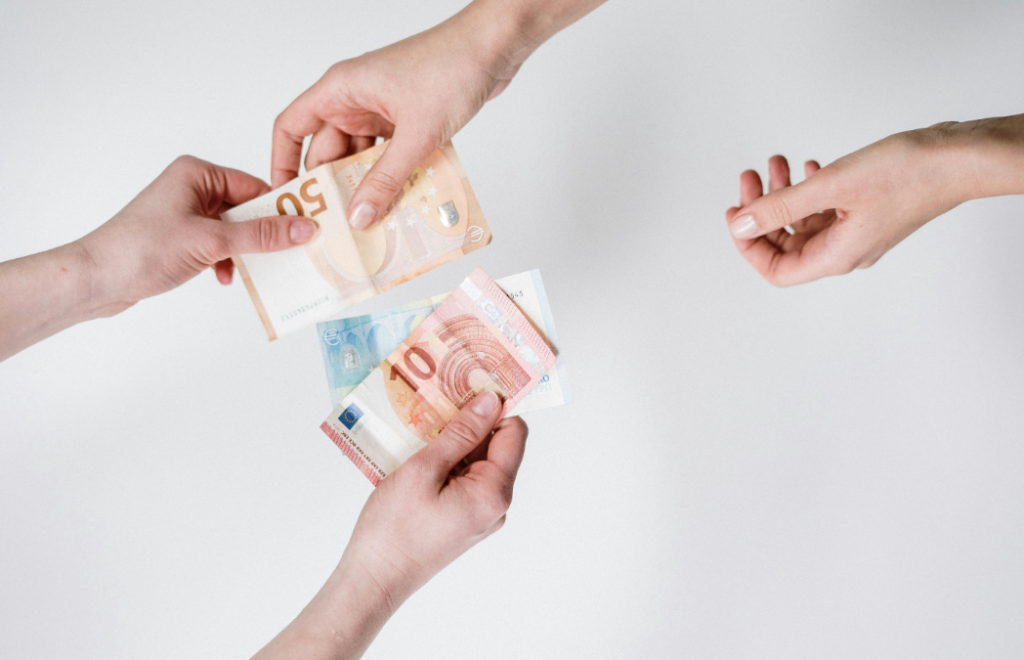Growing a Paid Community Through Podcasting: Insights from Jason Sew Hoy
Podcasting has grown exponentially, not just as a content medium but also as a revenue generator for creators.
Whether you’re starting out or already have an audience, there’s a wealth of potential to create a sustainable income stream through premium content and paid subscriptions.
In this post, we’ll explore some of the best strategies and key insights shared by Jason Sew Hoy on the Creator Science Podcast with Jay Clouse, focusing on how to monetize a podcast and grow a community.

Using Premium Content as Teasers for Public Feeds
One of the most effective strategies for growing a paid community is to offer premium content while still keeping your public feed active. The key here is balance:
- Create premium content (like AMAs, bonus episodes, or early access content) and make it available only to paying members.
- Use teasers or snippets of this content to entice free listeners. For example, you could release the first 5–15 minutes of a premium episode to the public.
“You can take the first 5, 10, 15 minutes, whatever you choose, and put a snippet of that onto your public feed to give people a taste of what they’re getting if they were a premium member.” — Jason Sew Hoy
This creates a natural curiosity and desire among free listeners, encouraging them to subscribe to your premium feed.
By offering value upfront and building a natural tension, your audience is more likely to convert to paying members.
- Include a call-to-action at the end of each teaser: “To hear the full episode, subscribe to our premium feed at [your website].”
Case Study: Breaking Points Podcast
Jason mentions that Breaking Points uses a similar strategy by cutting their episodes just before a pivotal debate between the two hosts:
“At that point on the public feed, it cuts off, and they say, ‘But we need your help… become a premium member today at breakingpoints.com.'”
This method not only creates intrigue but also continuously reminds the audience of the value they’re missing by not subscribing.

When to Start Offering a Paid Subscription
Many creators wonder at what point they should consider offering a paid membership to their audience.
According to Jason, it’s less about the size of your audience and more about having “podcast market fit.”
- Podcast Market Fit: You’ve reached podcast market fit when you notice consistent growth in downloads and engagement, with listeners returning regularly.
If you’re consistently getting feedback, requests for additional content, or emails from fans, it’s a good sign that you can start thinking about monetization.
“If you’re producing episode after episode and the numbers are stagnant… you’re too early to think about monetization. Focus on getting that ‘podcast market fit’ first.” — Jason Sew Hoy
Jason stresses that creators shouldn’t rush into monetizing too early.
Instead, they should focus on refining the content, format, and audience engagement until they hit a point where they’re consistently growing.

The Economics of Paid Podcast Subscriptions
When it comes to paid subscriptions, the conversion rate (the percentage of free listeners who convert to paying subscribers) can vary widely.
Jason explains that the top creators on Supercast (a platform for paid podcast subscriptions) typically see a conversion rate between 2% and 7%.
Factors That Influence Conversion Rates:
- Offering ad-free episodes can get you a 1-2% conversion rate.
- Adding in bonus episodes, AMAs, and private communities can increase your conversion rate to 5-7%.
“We’ve looked at our top 20 on Supercast, and those creators are averaging right around 5%.” — Jason Sew Hoy
While 5% might sound small, it can translate into significant revenue. For example, if you have 10,000 free listeners per episode and convert 5% of them into paying subscribers at $10 per month, that’s $5,000 per month or $60,000 per year.

How to Convert Free Listeners to Paid Subscribers
Jason shares several tried-and-true methods to convince free listeners to upgrade to a premium membership.
Below are some of the most popular and effective value propositions:
Easy-Lift Options (Repackaging Existing Content)
- Ad-Free Feeds: Simply removing ads from your episodes and offering this as a perk can attract paid subscribers.
- Early Access: Give your premium subscribers the chance to listen to episodes before the public. For instance, Shane Parrish of The Knowledge Project does this by releasing high-profile interviews, such as one with Bill Ackman, two weeks early for premium members.
- Extended Interviews: Save a few special questions for the premium version of your episodes or add exclusive, extended content.
- Back Catalog Access: After a certain time (say six months), make older episodes available only to premium members. This also helps keep the public feed more manageable.
New Content Options (Creating Fresh Content for Subscribers)
- Bonus Episodes: Create extra content only available to premium subscribers. These can be deeper dives or episodes on topics that wouldn’t make the public feed.
- Q&A/AMA Sessions: Engage your premium members by answering their questions or holding live AMA sessions.
- Access to Private Communities: Many creators build a sense of community through platforms like Slack or Circle, where premium members can interact with each other and the host.
“There’s a customer of ours, Reality Cray Cray, and they cover 90 Day Fiancé.
They’ve built a thriving Facebook community where people talk not just about the show but also about their personal lives, and it’s become a major engagement tool.” — Jason Sew Hoy
This combination of repackaging old content and creating new, exclusive experiences for your audience helps to build a strong community and adds layers of value to your premium offering.

Why Ads and Premium Content Can Coexist
There’s a common misconception that creators must choose between ads and premium subscriptions.
Jason argues that the two can work in harmony, with ads serving as an opportunity to offer ad-free experiences to paying members.
“The presence of ads creates the opportunity for an ad-free premium feed, and the two can work wonderfully well together.” — Jason Sew Hoy
Many top creators combine both revenue streams for a more balanced income, leveraging ads on their free episodes while giving paying members an ad-free experience.
This strategy allows you to maximize your earning potential without alienating your free audience.
Pricing Your Paid Membership
Determining the right price for your premium subscription is crucial. You want to balance value for your audience with sustainability for your efforts. Jason recommends starting with a $5-$10 per month price point.
- $5 per month is a common starting point for basic ad-free access.
- $10 per month is typical for access to bonus episodes, Q&A sessions, and community interaction.
“If you had 10,000 free listeners per episode and converted 5% at $10 per month, that’s $5,000 per month or $60,000 per year.” — Jason Sew Hoy

Building a Small Team to Manage Operations
As you grow, the operational burden of running a paid membership can increase. Jason explains that many top creators eventually hire help, but it doesn’t have to be a massive team.
- Many of Supercast’s top creators have small teams of 2-4 people. This team could include a producer, an audio engineer, and possibly a community manager.
“Top creators like Rhonda Patrick or Peter Attia might have researchers digesting scientific articles for their podcasts, but their teams are still relatively small.” — Jason Sew Hoy
Small, efficient teams can help with everything from content creation to community management, allowing you to focus on growing the show and serving your audience.

Conclusion:
The takeaway from Jason Sew Hoy’s advice is clear: growing a paid podcast community isn’t just about slapping up a paywall.
It’s about finding a balance between free and premium content, using teasers to entice listeners, and offering real value that encourages people to upgrade.
Key Strategies on How to Monetize a Podcast:
- Tease your premium content with free snippets to build curiosity.
- Don’t rush into monetization — wait until you’ve achieved podcast market fit.
- Mix ads and premium subscriptions to maximize your income.
- Offer a range of value propositions like ad-free episodes, early access, and private communities.
- Start small with your team and grow as needed.
Whether you’re just starting or looking to take your podcast to the next level, these strategies will help you grow and monetize your audience.
(Source: The Creator Science Podcast with Jay Clouse, featuring Jason Sew Hoy)




